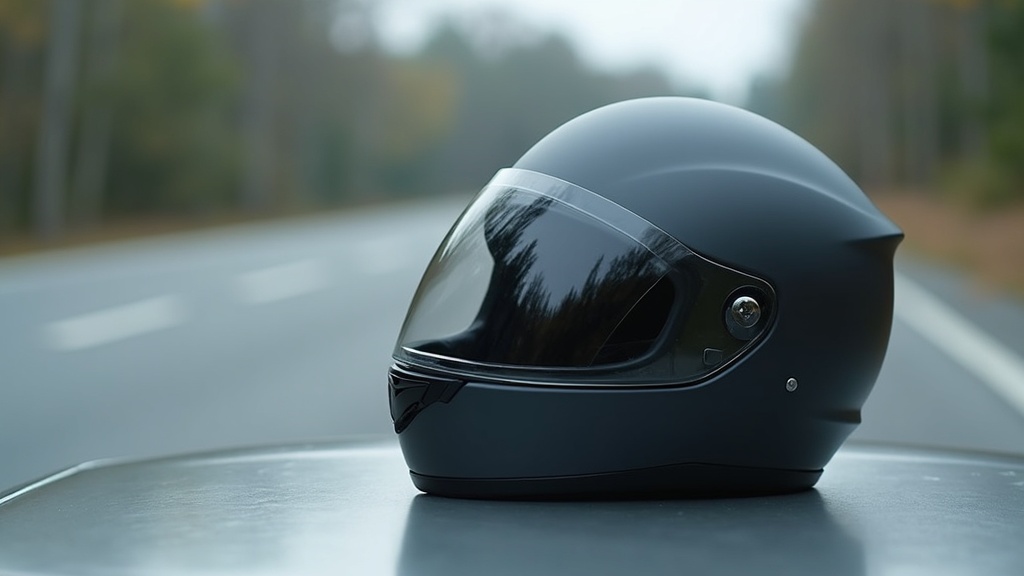
If you’ve ever spent time riding at highway speeds, you know wind noise inside your helmet can really wear you down. Besides being uncomfortable, it makes it hard to enjoy music or phone calls, and it can even put your hearing at risk over time. Picking a helmet that shrugs off wind noise isn’t just about comfort; it helps keep rides safer and more enjoyable.
Some helmets make a big difference in keeping things quiet. But picking the one that fits your budget and tops shelf stuff with every feature under the sun is tricky.
This guide breaks down my top choices on 3 best helmets for wind noise reduction, plus some things you can do to make any helmet quieter.
3 Best Helmets for Wind Noise Reduction
Not all helmets are built the same when it comes to blocking wind noise. Most of the top models focus on streamlined design, snug padding, and clever vents that let air flow without whistling past your ears.
Here are my three picks for the quietest helmets you can find right now, with a quick look at what I like and what’s not so great about each one.
1. Shoei RF-1400
This one gets a lot of praise for being really good at shutting out noise. The shell is shaped to cut through air, and the padding gives a tight but comfy seal.
Shoei’s vents are smooth enough that you feel air without the racket. Riders who’ve spent all day riding in this helmet, noticed a big drop in fatigue thanks to how quiet it is.
- Pros: Very quiet at speed, comfortable fit, easy to use visor, premium feel
- Cons: Price is on the higher side, fit can be tight for round head shapes
2. Schuberth C5
Schuberth gets a lot of love from touring riders who spend hours on the highway. The C5 is a modular helmet (that means the chin bar flips up) but still manages to block a lot of wind noise.
There’s extra plush padding around the base, and the integrated microphone and speaker pockets don’t leave weird gaps that leak sound.
- Pros: Super quiet for a modular, great for glasses wearers, lots of tech options
- Cons: Heavier than some full face helmets, pricier than most modulars
3. Arai Signet X
The Signet X is a favorite for riders with longer, narrower heads. What sets it apart is how well the liner fits without pinching, and the shield seal works great for keeping wind from sneaking in.
The noise reduction is really impressive, especially for riders with the right head shape for Arai.
- Pros: Very comfortable for long oval heads, solid all around noise control, quality build
- Cons: Not the quietest for round heads, shield system has a short learning curve
All of these helmets have their own focuses and quirks, but they share one thing in common: they’re a solid upgrade for anyone trying to tame wind noise while riding.
Risks of Having Wind Noise in Your Helmet
It’s easy to brush off wind noise as just a minor annoyance, but it’s got a few hidden downsides that are worth paying attention to.
If you are stretching long hours riding in a loud helmet, it can really take a toll on your body and your ride with the following consequences:
- Hearing Loss: Wind noise can hit levels above 100 decibels at highway speed, which damages your hearing over time, even with the visor shut. Permanent hearing loss or constant ringing (tinnitus) are both possible.
- Fatigue: Hours of loud wind noise will wear you out quicker. I always feel more wiped after a noisy ride, and studies back this up; loud noise makes your brain and body work harder.
- Lack of Focus: When you’re dealing with constant loud noise, your concentration drops. You might miss traffic sounds, emergency sirens, or even your own bike’s engine warnings.
- Communication Issues: Using a Bluetooth system or trying to chat with a passenger is pretty much impossible if wind noise is too high.
That’s why it’s really important to pick a quiet helmet or use some tricks to lower noise, especially for people who ride a lot.
How to Avoid Wind Noise in Your Helmet
Even the quietest helmet can let in wind noise if it’s not used the right way. Over the years, I’ve found a few solutions that actually work and make the ride way more peaceful.
- Get the Right Fit: A snug helmet cuts down wind entering at the neck and cheeks. Loose helmets act like echo chambers. Try on different sizes and brands to find one that hugs your head well.
- Use a Chin Curtain or Neck Roll: Some helmets come with these built in, or you can add one later. They plug the gap at the base and slow down air rushing in, which is usually the noisiest spot.
- Adjust Your Windshield: If your bike has a windshield, try moving it up or down an inch at a time to change where the wind hits your helmet. A little tweak sometimes makes a big difference in noise level.
- Wear Earplugs: Many experienced riders use earplugs on longer trips. Look for reusable ones made for motorcycles, as they filter wind noise but still allow you to hear sirens or important sounds.
- Check Seals and Vents: Make sure the shield and visor create a solid seal, and don’t forget to close vents at high speeds unless you’re overheating. Open or loose vents can whistle and increase overall noise.
Combining a well designed helmet with these tricks can keep wind noise pretty manageable, even at speed.
Helmet Wind Noise Frequency
Wind noise inside a helmet isn’t just one sound; it’s a bunch of frequencies mashed together.
Most of the noise comes as a low, rumbling whoosh between 200 to 1000 Hz (hertz), with some sharp whistling or buzzing if air sneaks through gaps or vents. The worst levels for your ears are usually in the higher frequencies (over 1,000 Hz), but the lower range is what feels tiring and drowns out other noises.
Some helmets are shaped to push air away from these noisy spots, and padded linings help soak up certain ranges of sound.
Earplugs are great at blocking the worst parts while letting you hear important stuff, and some Bluetooth headsets now offer active noise cancellation, though it’s not as good as old school sealing and earplugs just yet.
If you use a decibel meter app on your phone during a ride (be careful and stay safe!), you’ll usually see wind noise spike as you go over 50 mph. Sometimes just raising or ducking your head changes the sound more than you’d expect.
Testing different head positions and checking your helmet fit regularly can help keep wind noise under control. Many riders find that tweaking just a few things makes a noticeable difference in how noisy their rides are.
Are Expensive Helmets Quieter?
Price doesn’t guarantee quietness, but spending more usually gets you better design, thicker padding, and cleverer vents, all things that help keep noise down.
There are plenty of budget helmets that are fine at lower speeds, but they don’t hold up when things got fast. Higher end options often come with extras like wind tunnel testing, snug shield seals, and extra sound deadening foam.
I wouldn’t buy a helmet based just on price, though. Many of midrange helmets have impressive noise levels if they fit right and use up to date tech. The quietest ride comes from matching your head shape, your bike’s wind flow, and your riding style with a well made helmet.
If possible, check online reviews or ask riders with similar setups about their helmet’s noise before dropping a bunch of cash. Also, keep in mind that advancements in helmet materials and test methods mean that features for noise reduction are continually getting better even in affordable lids.
Don’t be fooled by heavy graphics and finishes; what matters most for noise reduction is the helmet’s shape, seal, and fit.
Do Modular Helmets Have More Wind Noise?
Modular (or flip up) helmets are super convenient, but all those hinges and seams give air more places to sneak in. That means, in general, modulars can be a little noisier than full face helmets. This is especially true if you ride with the chin bar up, which isn’t recommended on the highway anyway.
But helmet makers are getting better at closing those gaps. Helmets like the Schuberth C5 combine the benefits of a modular with more effective noise control, mainly thanks to thick seals, improved shell shapes, and better padding.
Still, if dead silent riding is your goal and you don’t need the flip up feature, a premium full face is usually a bit quieter. Modular helmets can be a great choice if you value flexibility, but always check noisy spots like the joint seals before making a decision.
Related Read: Is it better to wear a full-face helmet or not?
Testing a modular helmet before you buy one (with the chin bar down and using your usual gear) helps a lot when figuring out if wind noise will be a deal-breaker for your rides. The comfort and extra features might outweigh a slight bump in wind noise for many riders.
Extra Tips for a Quieter Ride
- Keep Your Shield Clean: Scratches and dirt make wind break up, sometimes boosting noise. Clean your shield often and replace if it’s really scuffed.
- Tuck in Cables and Accessories: Anything you stick on your helmet, like cameras or comms units, can make new airflow patterns that whistle or hum. Keeping addons smooth or tucked away can limit new noise.
- Layer Up Your Gear: A high collar jacket or a buff worn around your neck plugs gaps at the collar and helps block wind from getting inside.
- Check Your Bike’s Aerodynamics: Sometimes wind noise starts with your bike’s windshield or fairings. Try making small adjustments to your riding position or the way airflow hits your helmet to find a quieter sweet spot.
- Maintain Helmet Parts: Regularly inspect your helmet’s visors, seals, and padding. Replacing worn or compressed padding makes a noticeable drop in wind noise.
Final Thoughts
Riding with less wind noise is more comfortable, makes it easier to focus on what’s happening on the road, and helps keep your ears healthy for the long haul.
The right helmet, picked for both fit and design, makes a big difference. A few smart tweaks around your bike and gear can push things even further.
If quiet is your top priority, test different helmets, look for a snug fit, and don’t forget some quality earplugs for those high speed runs.
A peaceful ride is a better ride every time, so take your time to pick the right helmet and tweak your setup for next level cool comfort on every trip.

